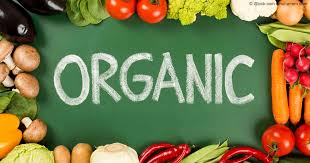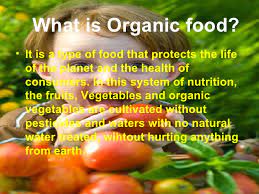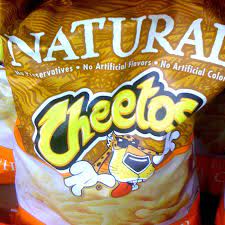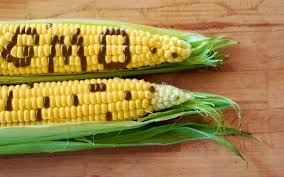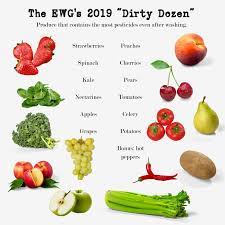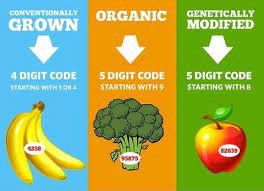What the heck does all of this mean… I had no clue before I became a pro in this area… I had to take courses and read so many books to get a good clear understanding why I should be paying double the price for the “same” foods. Well, the food is not the same and hopefully this will help you learn what exactly organic means.
The Definition of Organic
In the United States, organic is a labeling term that indicates that the food or other agricultural product has been produced through approved methods that integrate cultural, biological, and mechanical practices that foster cycling of resources, promote ecological balance, and conserve biodiversity. Synthetic fertilizers, sewage sludge, irradiation, and genetic engineering may not be used.
The U.S. Department of Agriculture (USDA) organic regulations recognize four categories of organic products under the National Organic Program:
- Crops: A plant that is grown to be harvested as food, livestock feed, fiber, or used to add nutrients to the field.
- Livestock: Animals that can be used for food or in the production of food, fiber, or feed.
- Processed products: Items that have been handled and packaged (i.e. chopped carrots) or combined, processed, and packaged (i.e. soup).
- Wild crops: Plants from a growing site that is not cultivated.
Seriously, what the heck does organic mean anyway?
So, for example, for fruits and vegetables to be certified as organic, they must be grown without the use of pesticides, artificial fertilizer, or sewage sludge. And for meat that is deemed organic, it must come from animals that have been raised without the use of growth hormones or antibiotics that are very widely used in the production of all meat-producing animals including beef, poultry, pork, lamb, etc. The animals must have been fed a diet that consists of nothing but organic feed.
That also means:
* Milk from milk cows that are fed only an organic diet does not contain growth hormones or antibiotics. The same is true for dairy products like milk and cream.
* Eggs that are laid by chickens that are fed only a diet of organic feed do not contain antibiotics or growth hormones.
You can think of the tomatoes that you grow in your backyard without the use of commercial fertilizers or pesticides as “organic”, however, you would be unable to use the term “certified organic” as defined by the U.S. government.
Understanding Organic Labeling
The USDA has established production and labeling requirements for organic products. An overview of labeling the various categories of organic products is provided below.
Principal display panel: portion of the package most likely to be seen by customers at the time of purchase. Your certifying agent will review and approve each of your product labels to ensure compliance.
Information panel: includes ingredient statement (list of ingredients contained in a product, from highest to lowest percentage of final product) and other product information.
-
100% Organic
Raw or processed agricultural products in the “100% certified organic” category must meet these criteria:
-
All ingredients must be certified organic.
-
Any processing aids must be organic.
-
Product labels must state the name of the certifying agent on the information panel.
Principal display panel: May include USDA organic seal and/or 100% organic claim.
Information Panel: Must identify organic ingredients (e.g., organic dill) or via asterisk or other mark.
- Organic
Raw or processed agricultural products in the “organic” category must meet these criteria:
-
All agricultural ingredients must be certified organic, except where specified on National List.
-
Non-organic ingredients allowed per National List may be used, up to a combined total of 5% of non-organic content (excluding salt and water).
-
Product labels must state the name of the certifying agent on the information panel.
Principal display panel: May include USDA organic seal and/or organic claim.
Information Panel: Must identify organic ingredients (e.g., organic dill) or via asterisk or other mark.
-
“Made with organic”
Multi-ingredient agricultural products in the “made with” category must meet these criteria:
-
At least 70% of the product must be certified organic ingredients (excluding salt and water).
-
Any remaining agricultural products are not required to be organically produced but must be produced without excluded methods.
-
Non-agricultural products must be specifically allowed on the National List.
-
Product labels must state the name of the certifying agent on the information panel.
Principal display panel: May state “made with organic (insert up to three ingredients or ingredient categories).” Must not include USDA organic seal anywhere, represent finished product as organic, or state “made with organic ingredients.”
Information Panel: Must identify organic ingredients (e.g., organic dill) or via asterisk or other mark.
-
Specific organic ingredients
Multi-ingredient agricultural products that contain less than 70% certified organic content (excluding salt and water) don’t need to be certified; any non-certified product.
Principal display panel: Must not include USDA organic seal anywhere or the word “organic” on principal display panel.
Information Panel: May only list certified organic ingredients as organic in the ingredient list and the percentage of organic ingredients. Remaining ingredients are not required to follow the USDA organic regulations.
Be aware that labels can be deceiving. You have to understand the language and the labeling so that you know exactly what you are buying. There are fines and penalties for mislabeling products as organic when they are in fact not organic, however, every once in a while something may slip through the cracks.
Check out the dirty dozen if you can’t afford all organic foods. https://www.ewg.org/foodnews/dirty-dozen.php
Does Organic Mean GMO Free?
If the product is labeled 100% organic, there’s a good chance it’s GMO- Free. However, if the product is 70-95% organic, that leaves room for non-organic ingredients, which could, unfortunately, include GMOs. Organic certifiers want to ensure that GMOs are not used in organic products, but getting 100% verification that all substances are non-GMO just may not be possible and the National Organic Program offers very little guidance on how organic certifiers can assure there are no GMOs in their non-organic ingredients.
And even if there was a process to ensure a product’s non-organic ingredients are GMO free, GMO contamination can still occur in any number of natural ways: 1) via cross-pollination between GMO and non-GMO crops; 2) from trace amounts of GMO ingredients found in animal feed; 3) from seeds traveling by wind or by migratory birds that take root in the soil of an organic farm; and 4) from ingredient suppliers that co-mingle various sources.
Despite the unknowns of GMOs being used in organic products, USDA Certified Organic is one of the best and most easily identifiable ways of assuring that you are eating GMO-free foods most of the time.
Want to make sure you are buying organic produce? Look for the 9 preceding the 4 digit code. If it’s just a 4 digit code, it’s not organic. If it’s an 8 preceding the 4 digit code, then it is genetically engineered (GMO).
You can also check out products that are certified by the Non-GMO Project. The Non-GMO Project is a non-profit organization committed to preserving and building the non-GMO food supply, educating consumers, and providing verified non-GMO choices.
Being certified by the Non-GMO Project does not necessarily mean that the product is GMO free, however, it is trustworthy, defensible, transparent, and North America’s only independent verification for products made according to best practices for GMO avoidance. Being certified by the Non-GMO Project does show, nevertheless, that the product has gone through a multi-step verification process that ensures the lowest possible risk of exposures to GMOs.
To learn more visit The Non-GMO Project
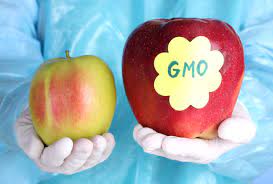
The Deal with Pesticides
A pesticide is any substance or mixture of substances intended for preventing, destroying, repelling, or mitigating any pest. The term pesticide applies to insecticides, herbicides, fungicides, and various other substances used to control pests. Under United States law, a pesticide is also any substance or mixture of substances intended for use as a plant regulator, defoliant, or desiccant.
There are thousands of active ingredients registered as pesticides, which are formulated into thousands of pesticide products that are available in the marketplace. And pesticides are used everywhere, from farms to city parks to the home owner using pesticides on the lawn.
Under the Food Quality Protection Act (FQPA), the Environmental Protection Agency (EPA) must ensure that all pesticides used on food in the United States meet FQPA’s stringent safety standard.
The EPA evaluates every new pesticide and every new use for safety before registration. Before they may be sold, EPA must ensure that pesticides are safe for human health and the environment when used according to label directions. For each pesticide, EPA evaluates hundreds of different scientific studies.
However, the question remains is can it keep up with all the chemicals?
After pesticide registration, EPA reevaluates its safety every 15 years, taking into consideration any new data.
We all know that 15 years is a long time and a lot can happen in the area of consumer health in between pesticide evaluations.
Since people can be exposed to pesticides in three ways (inhaling, absorption through the skin, and orally), what level is exactly “safe” for ingesting the pesticide residue on fruits and vegetables and just who determines how much pesticide is okay to eat?
Most of the foods we eat have been grown with the use of pesticides. Therefore, pesticide residues may be present inside or on the surfaces of these foods. Per the National Organic Program, beginning January 1, 2013, organic certifying agents must test samples from at least 5% of the operations they certify on an annual basis.
Obviously every apple and every spinach leaf can’t be tested to make sure it complies with the “safe” levels.
But again, what’s considered “safe”?
The term “safe” can vary. What could be safe for a 200 pound man may not necessarily be safe for a 110 pound woman or an infant or small child. Children’s exposure to pesticides is greater than adults because of their distinctive body types. Because they are still in the critical stages of development, they are more susceptible to the toxic effects of pesticides.
Every day, more and more pesticides are being approved for use. Pesticide products also contain inactive ingredients, which are not identified by name on product labels due to trade secrecy. This could be hazardous.
Every year the Environmental Working Group (EWG) puts out a guide called the Shopper’s Guide to Pesticides in Produce.
This guide includes the 12 most contaminated fruits & vegetables, including apples, strawberries, and now most recently kale. Think about how many of these food items you and your family may eat on any given day. To learn more visit The Environmental Working Group.
Decreasing Your Toxic Load with Organic
The fact is that buying organic food as well as buying other “green” products makes the world less toxic for all living things, including but not limited to humans. Buying organic supports the idea that we want the food we eat to be raised without the use of toxic pesticides, fertilizers, and drugs.
Also, the fact that babies are now exposed to the toxic risk of pesticides, fertilizers, and drugs before they are even born, it’s no wonder why sometimes they have so many health problems. The “tolerance” levels that have been established for the use of these toxic substances don’t work for all. Remember, infants and children are not tiny adults.
And have you ever thought about what happens to those toxic pesticides and fertilizers after they are used?
They don’t evaporate into thin air. Some of the chemicals in them become airborne. They pollute the air of towns and cities miles away from where they were used. The ones that don’t become airborne are washed away when it rains, and the runoff goes into the streams and rivers that supply the drinking water for all of us. These are also the same streams and rivers that we get our fish and other seafood from.
So now you know what the HECK organic means…
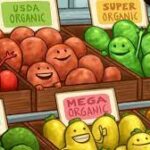
Schedule a complimentary 45-minute consultation with Samantha to talk about your health journey and discover your best YOU!
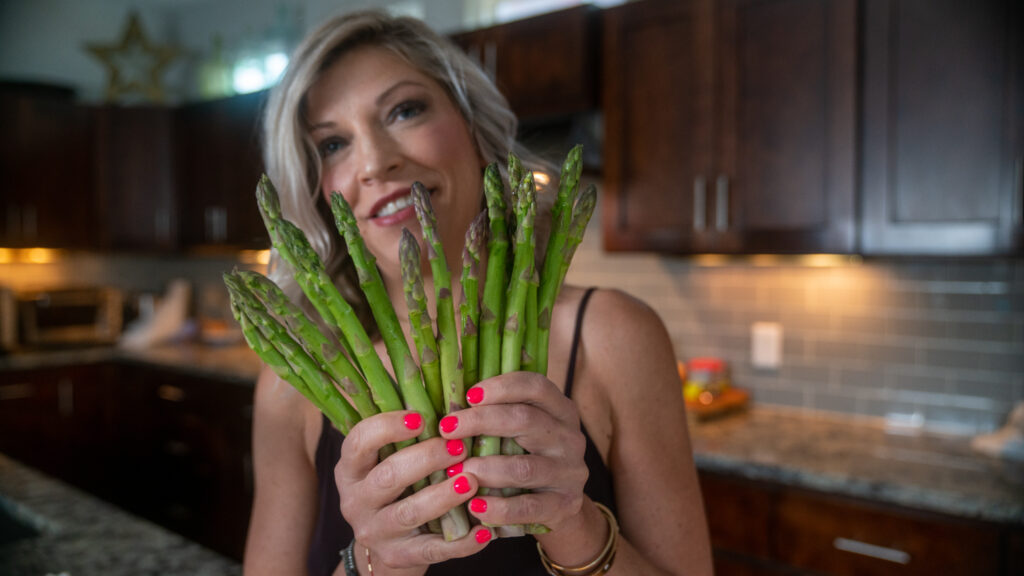
#healthyliving #holisticnutrition #integrativehealth #nutrition #naturopathicmedicine #functionalmedicinenutritionist #holistichealth #functionalmedicinemn #healthcoach #functionalnutrition #healthylifestyle #healthy #healthyfood #guthealth #functionalmedicinenp #wellness #functionalmedicineindia #naturalmedicine #functionalmedicinedoctor #functionalmedicinecoaching #functionalmedicineindonesia #functionalmedicinesf #functionalmedicinenyc #naturopathicdoctor #health #functionalmedicinemd #integrativemedicine #functionalmedicinehealthcoaching #functionalmedicinecoachingacademy #functionalmedicinefoods #healthy #healthyeating #food #healthyfoodsshare #healthyfoodie #healthylifestyle #healthyrecipes #healthyfoodsharing #healthyliving #healthyfoods_0kkal #health #healthyfoodstudio #indianhealthyfoods #healthyfoodstores #healthyfoodsinlagos #healthyfoodsemarang #foodie #healthyjunkfoods #healthyrecipe #vegan #mndxhealthyfoods #nutrition #foodporn #healthyfoodsydney #healthyfood #healthyfoodideas #foodstagram #healthyfoodshare #instafood #healthyfoodstagram #chronicpain #fibromyalgia #mentalhealth #healthylifestyle #glutenfree #autoimmuneawareness #autoimmunearthritis #autoimmunerkrankung #autoimmunestrong #autoimmunedisease #autoimmunewarriors #selfcare #autoimmunediseases #health #spoonielife #autoimmunepaleo #autoimmunediseasewarrior #butyoudontlooksick #invisibleillness #wellness #chronicillness #autoimmunediseaseawareness #autoimmunepaleocookbook #autoimmuneprotocol #autoimmunewarrior #chronicallyill #chronicfatigue #spoonie #autoimmunewellness #lupus #functionaldiagnosticnuyrition #functionaldiagnosticenutrition #functionaldiagnosticnutritionpractioner #functionaldiagnosticnutritionist #functionaldiagnosticnutrtition #functionaldiagnosticnutritiom #functionaldiagnostics #functionaldiagnosticnurtritionpractitioner #functionaldiagnosticmedicine #functionaldiagnostichealthcoach #functionaldiagnosticnutriton #functionaldiagnosticnutrtion #functionaldiagnosticnutritionpractitione #functionaldiagnosticcorrection3d #functionaldiagnosticnutrtionist #functionaldiagnosticnutritionptactitioner #functionaldiagnosticpractitioner #functionaldiagnosticnutritioncoach #functionaldiagnosticnutrition #functionaldiagnosticnutritionpractitioner #functionaldiagnostictesting #functionaldiagnosticnutritiondelete #functionaldiagnosticnutritionpractititioner #functionaldiagnostictests #functionaldiagnosticpractioner #functionaldiagnosticnutition #functionaldiagnostic_correction3d #functionaldiagnosticnitrition #functionaldiagnostic #functionaldiagnosticnutritiompractitioner #candidafree #candidafood #candidataoficial #candidatoaprefeito #candidastevensgallery #candidahofer #candidatos2020 #candidacleanse #candidates2020 #candidatoavereador #candidaferreira #candidasa #candidafriendly #candidati #candidaalbicans #cândida #candidatura #candidadetox #candidats #candidadiet #candidaovergrowth #cándidamontilla #candidadoyle #candidasabali #candidasabeach #candidata #précandidato #cándida #candidate #candidaautoral
